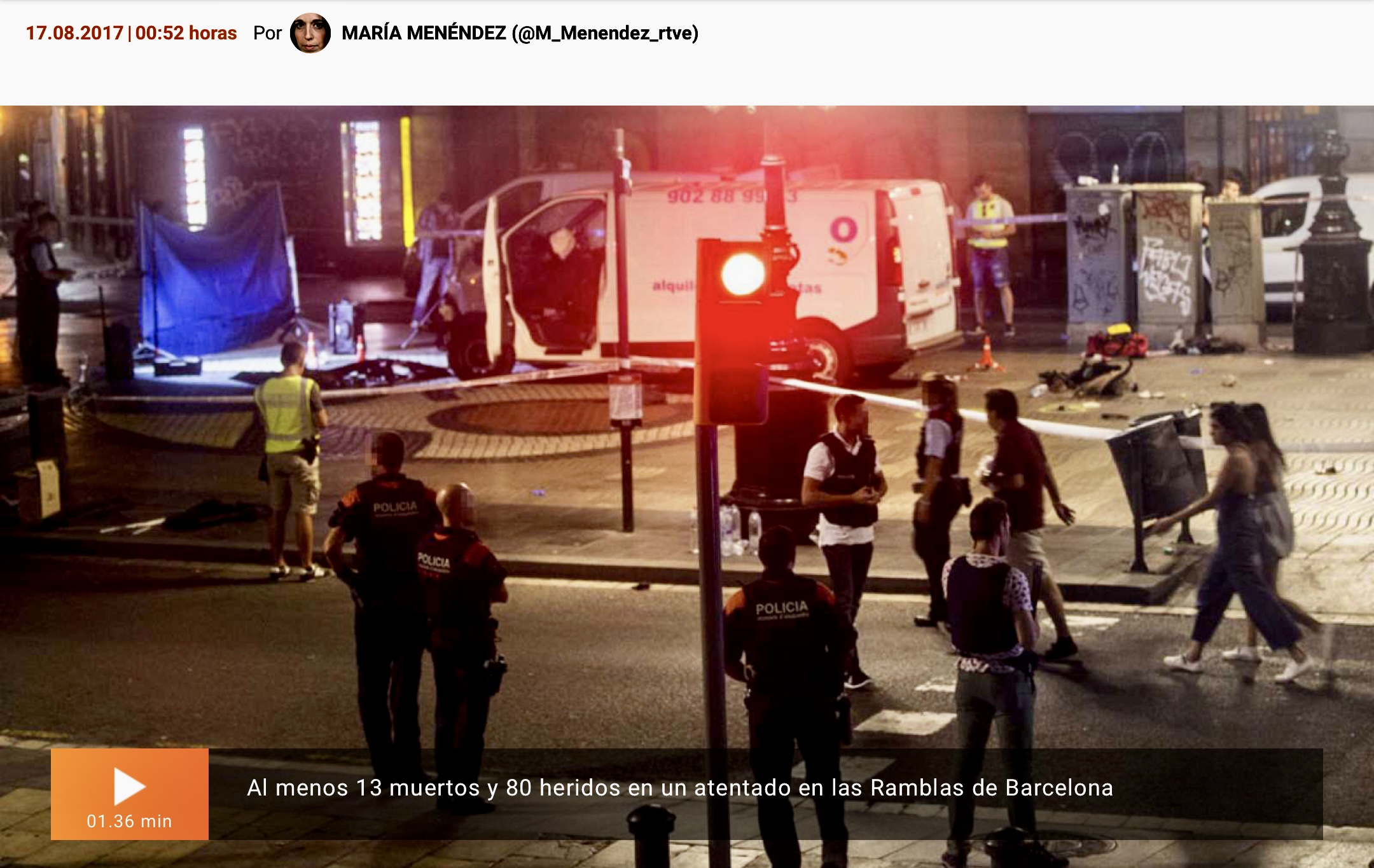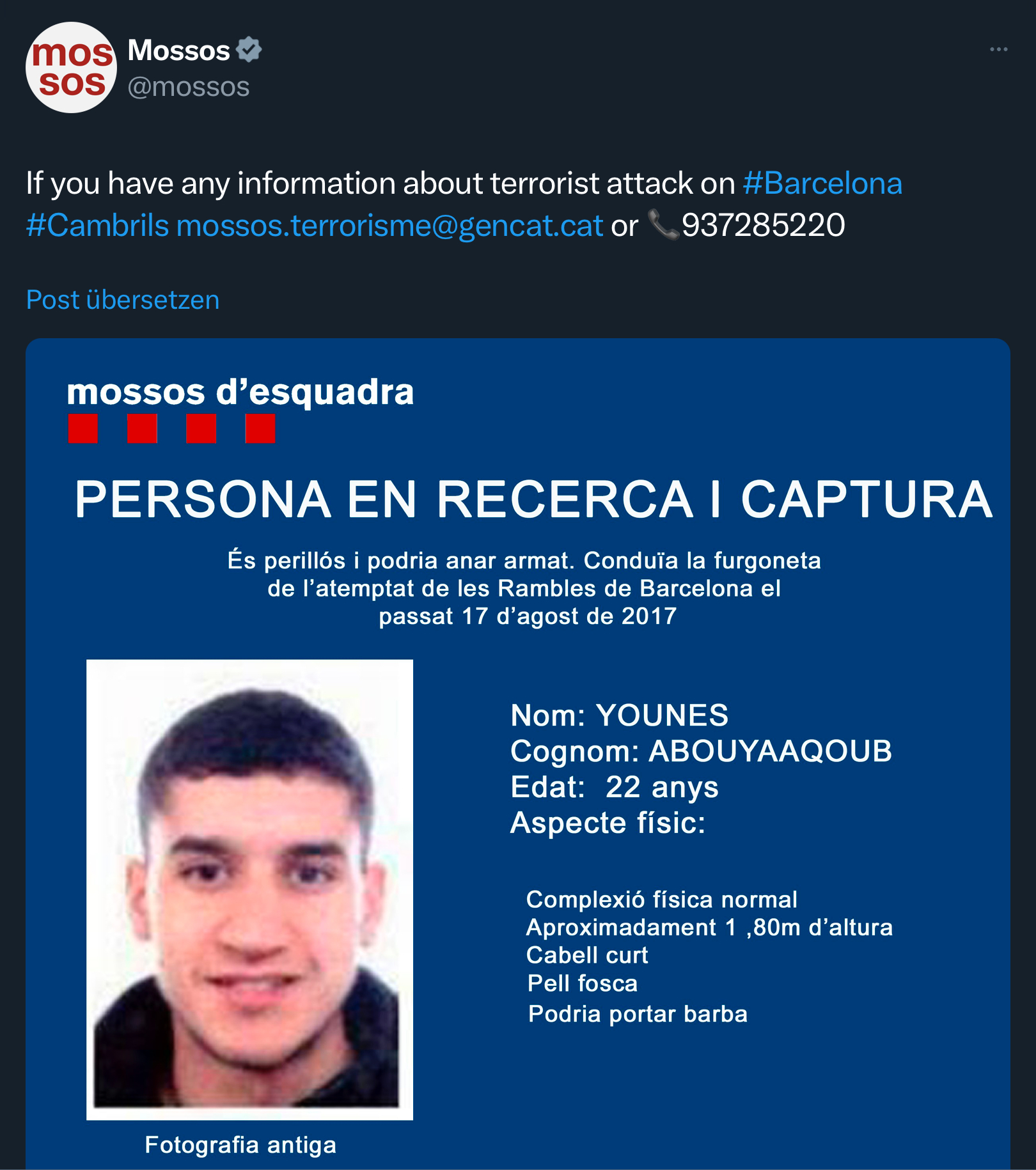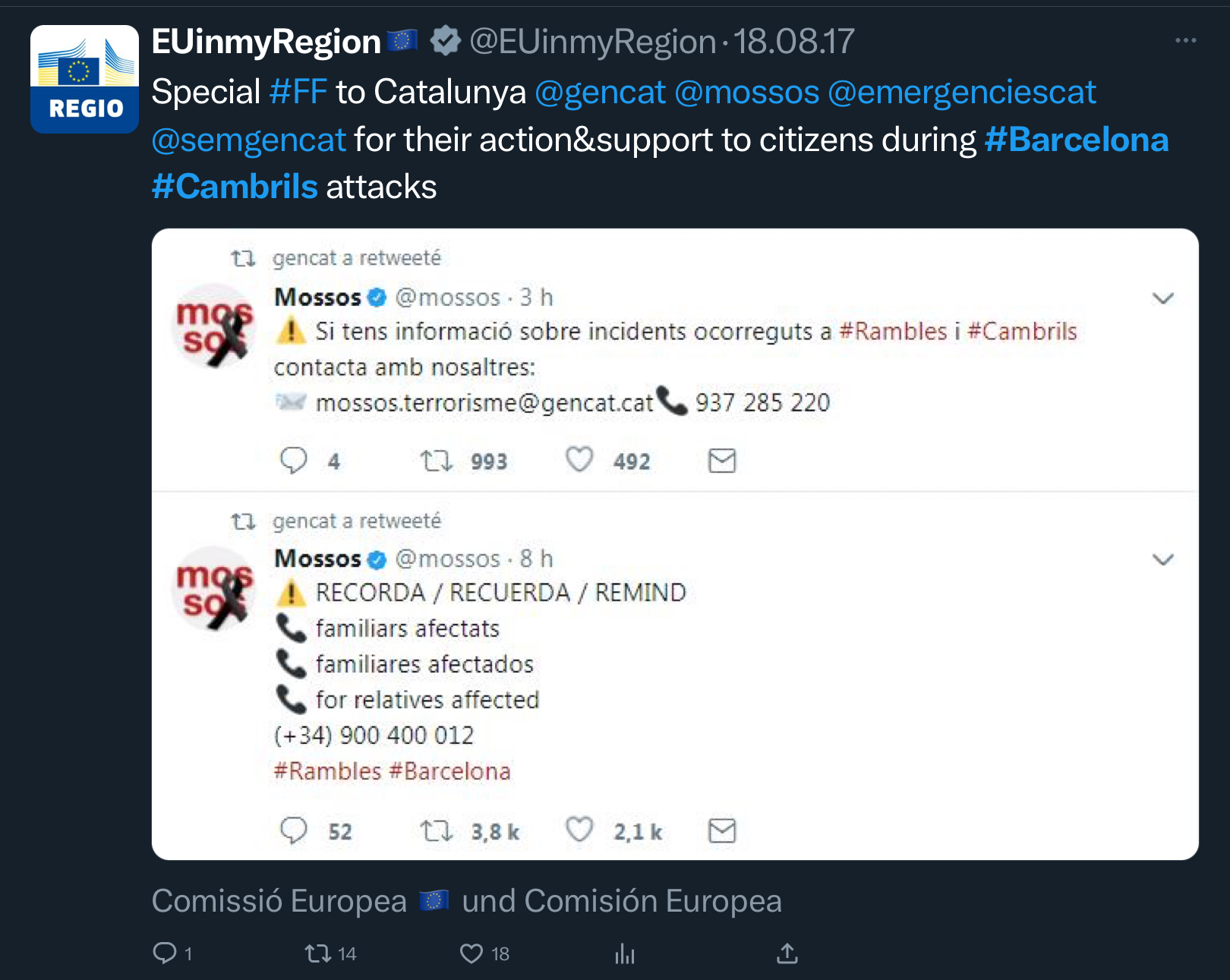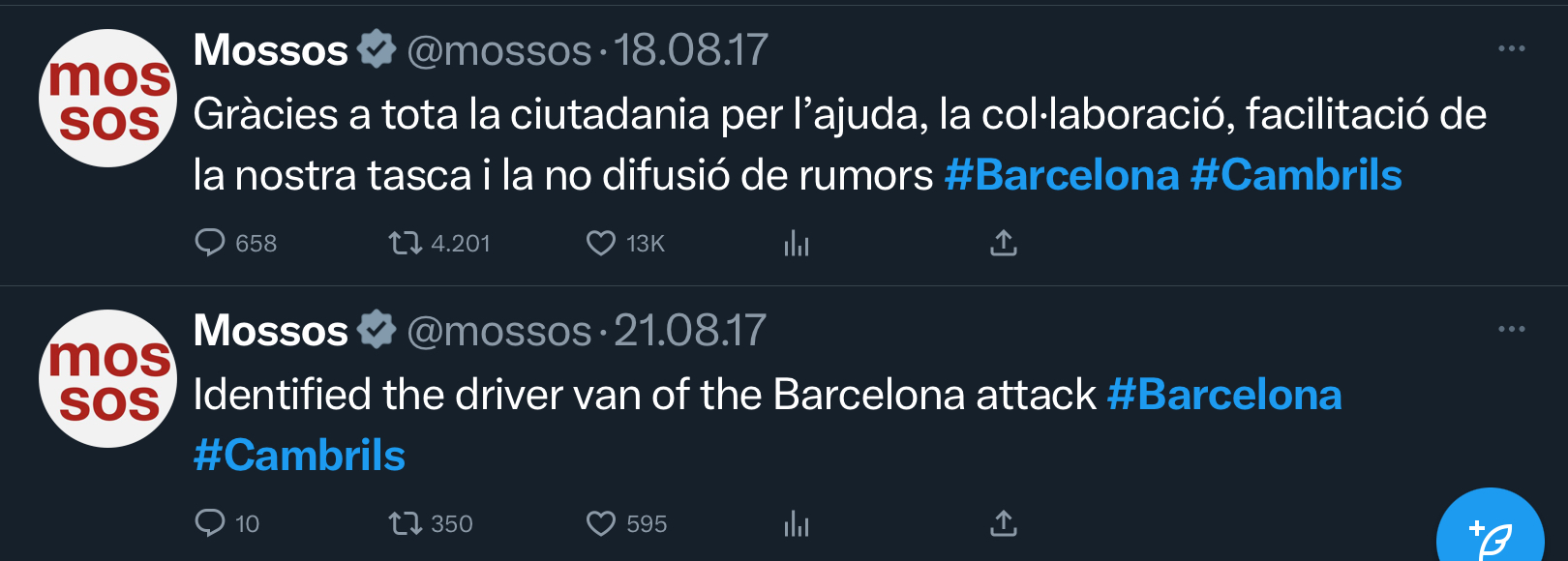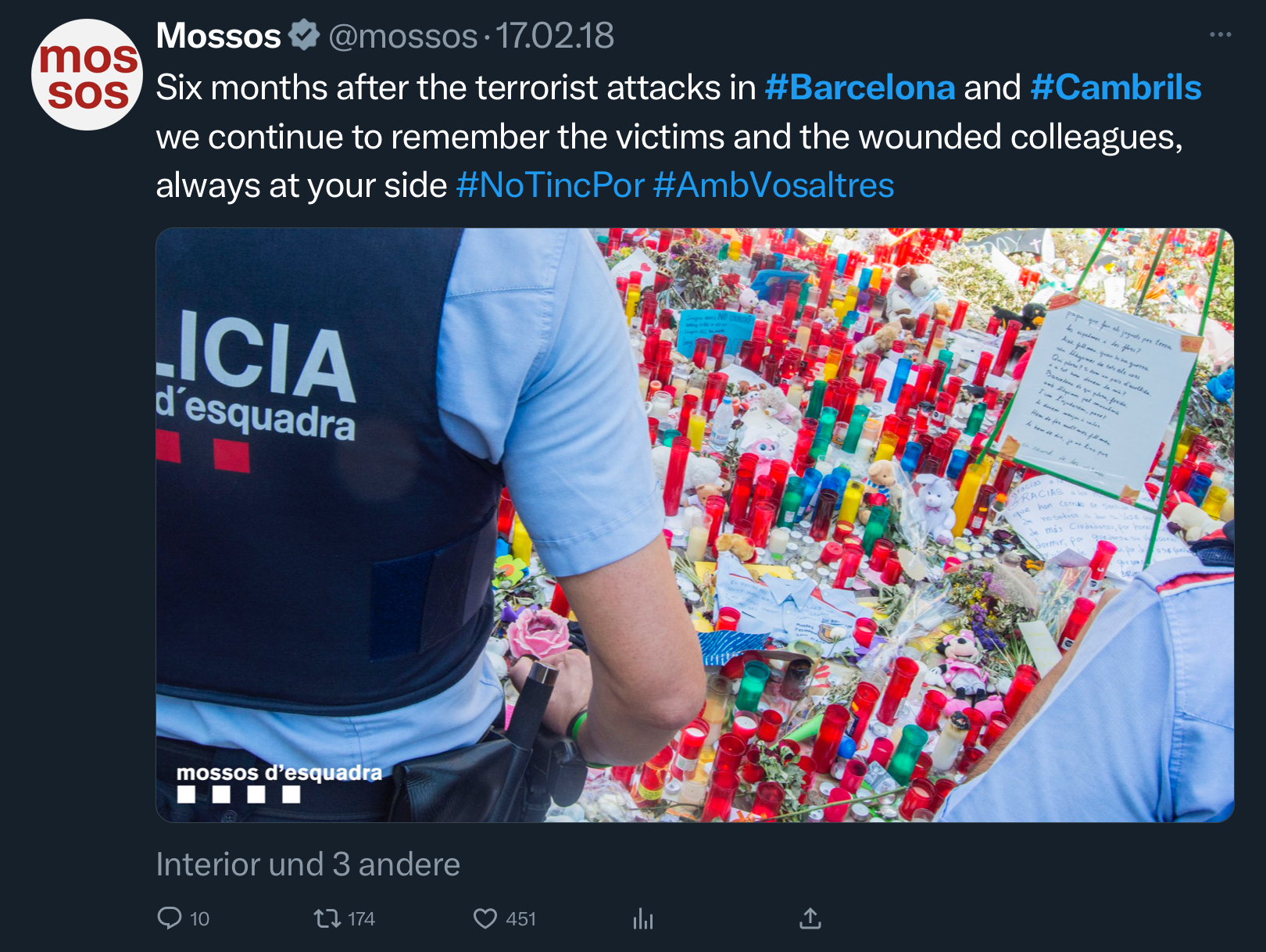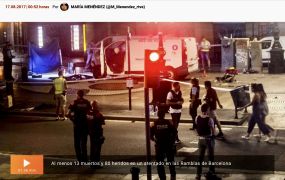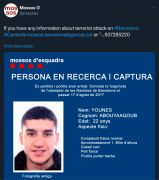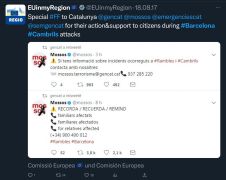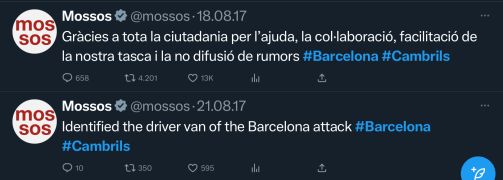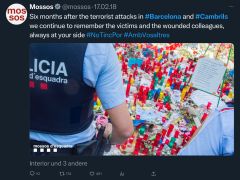Last edited: 29 November 2023
Hazard:
TerrorYear:
2017Location:
Catalonia, SpainScale:
CityInvolved Organisations:
Police CataloniaPublishing Organisation
Deutsche Hochschule der Polizei (DHPol)
Category
Real-world
Theme
Social Media
Thematic
- Collecting and Analysing Information from SMCS
- Making Information Accessible
- Targeting Communication
Disaster Management Phase
After, During
Description
On the evening of 17 August 2017, a van was deliberately crashed with high speed into the Las Ramblas boulevard in Barcelona. 14 people were killed and more than 100 were injured. In the resulting confusion, the 22-years-old perpetrator was able to escape the scene on foot. During his further escape, he hijacked another vehicle and stabbed the driver to death. A few kilometers from Barcelona, he left the car with the dead body. Immediately, all public events in Barcelona were cancelled and Mossos d'Esquadra, the police force of Catalonia, launched ‘Operation Cage’ to locate the perpetrator. On 21 August, the police received tips about his whereabouts and were able to locate and shoot him.
Around 1am on August 18th, eight hours after the first assault, another car was crashed into pedestrians in Cambrils, 100 km southwest of Barcelona. The five individuals from inside the car got out wearing fake suicide vests and started to attack bystanders with knives, stabbing one woman to death. Four of the attackers were immediately shot dead by the arriving police, the fifth managed to flee but succumbed to his injuries several hours later.
Both attacks were later linked to an Islamist cell with headquarters in Alcanar. This building was destroyed in an explosion a day prior to the Barcelona attack, killing two members of the cell, including a 40-year-old imam who is also thought to be the mastermind behind the other attacks.What worked well and could be recommended to others?
Mossos d’Esquadra, the Catalan police, was primarily in charge of the public management of the incidents and received great praise for the way they did tackle matters – particularly from a research project (Cristófol, De-San-Eugenio-Vela & Paniagua-Rojano 2020) that built on in-depth analyses of 348 tweets issued by the organization in the aftermath of the attacks and interviews with numerous internationally acclaimed crisis communication experts. This evaluation concludes that the crisis management from Mossos d’Esquadra can serve as a best-practice model with regard to at least two important aspects:
• Upon the attacks in Barcelona and Cambrils, the Mossos d’Esquadra acted immediately and in an univocal manner to manage the crisis: by posting regular and transparent updates on the status of the investigation, notices to the public and live broadcasts of press conferences, they made sure that their Twitter account (@mossos) became the official and primary source of information on the attacks.
• Mossos d’Esquadra’s crisis management approach was based on actual dialogic communication and active listening: Throughout the days and weeks after the incidents, the Twitter account became more than a mere service information platform but a tool for actual public relations management, constant interaction, mutual collaboration, and dialogue between citizens and the Catalan police. They provided fast and univocal responses to questions, showing as much transparency as possible. And they actively observed and responded to the needs of the public via their Twitter account, adjusting instructions or issued warnings based upon the responses. They e.g., are used to post in Catalan only but soon switched to Spanish, English and French as well to account for the numerous tourists affected. Moreover, they accounted for the fact that a lot of the discourse surrounding such shocking events is driven by emotion such as fear or anger rather than rationality and thus used the channel to frequently express empathy with the affected population, reflecting togetherness.What limitations were identified?
Like many terrorist attacks, the incidents gave rise to polarization and rumors, oftentimes starting on social media but with severe spill-over effects offline:
For instance, several days after the attacks, islamophobic incidents occurred in Sevilla, Logroño and Granada.
Moreover, even though the Islamic State had officially claimed responsibility for the attacks and the National Audience court in 2021 sentenced three members of the Alcanar cell to 53, 46, resp. 8 years in prison for their involvement in the plots, the events are reason for speculation until today: In January 2022, former police commissioner José Manuel Villarejo, indicated that the Spanish authorities knew of the Barcelona plot beforehand but deliberately used it to inhibit the Catalonian Independence movement. Though many dismissed this allegation as a mere conspiracy theory, it prompted the Catalan president Pere Aragonès to call for an investigation.Which social media platforms were used?
Additional Links
- https://www.bbc.com/news/world-europe-40998300
- http://www.rtve.es/noticias/20170818/autor-material-del-atropello-barcelona-uno-abatidos-cambrils/1599823.shtml
- https://gantdaily.com/2017/08/18/spain-attacks-police-shoot-dead-5-suspects-in-12-hours-of-terror/
- Crisis Communication:
- Attacks in public places
